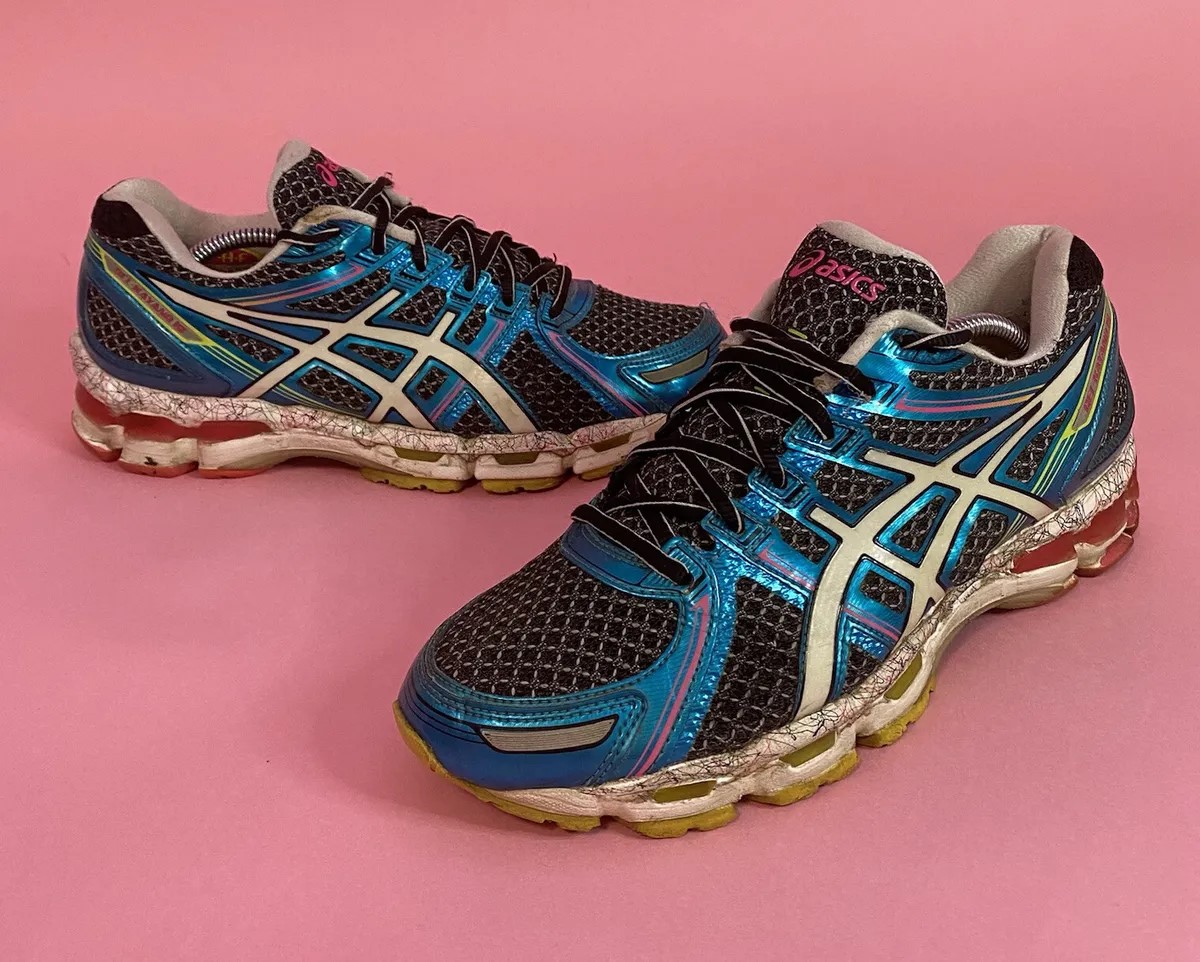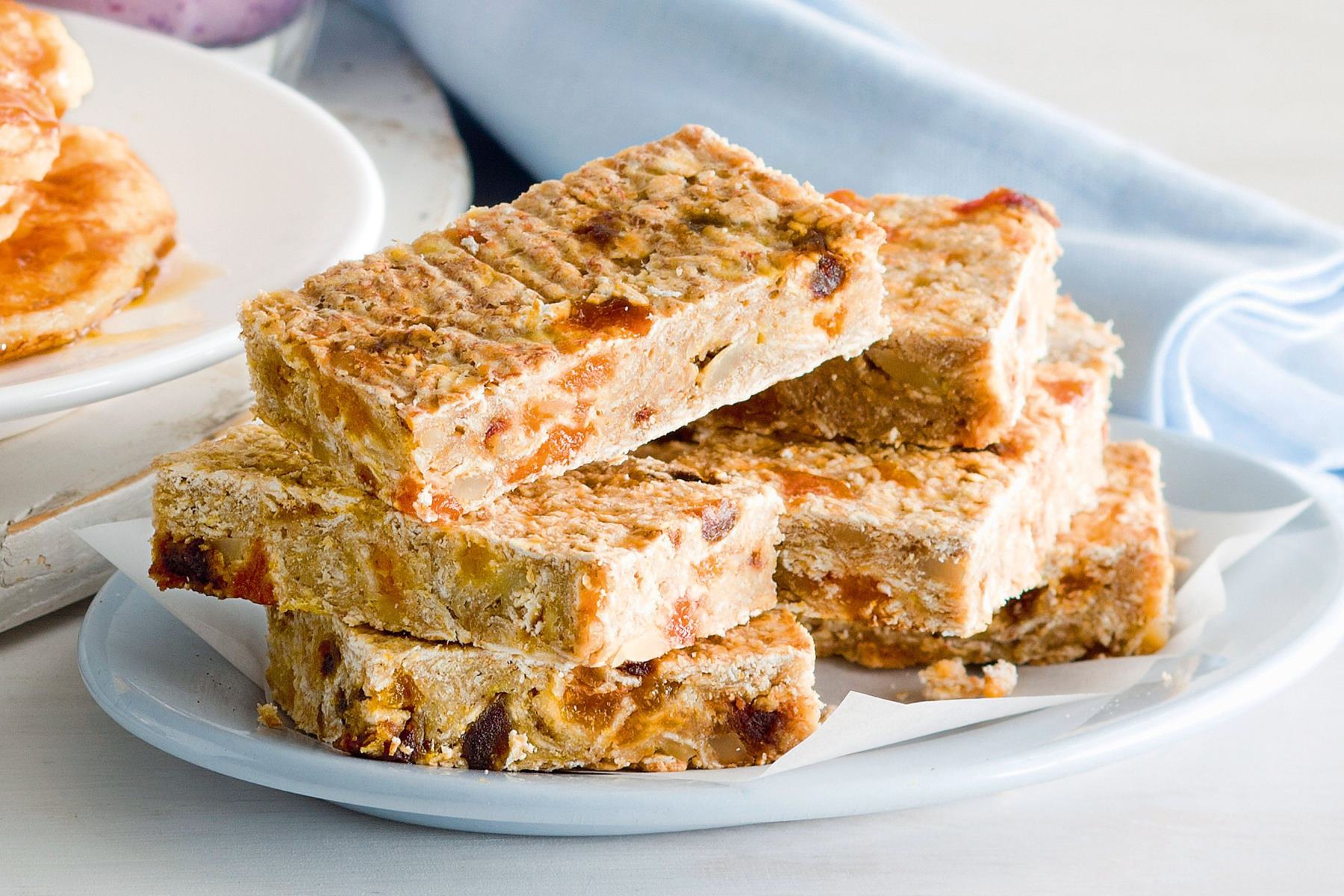Home>Health & Nutrition>Exploring The Effectiveness Of Energy Gels In Running


Health & Nutrition
Exploring The Effectiveness Of Energy Gels In Running
Published: February 24, 2024
Discover the impact of energy gels on running performance and learn about their role in health and nutrition. Explore the effectiveness of energy gels for optimal running results.
(Many of the links in this article redirect to a specific reviewed product. Your purchase of these products through affiliate links helps to generate commission for Therunningadvisor.com, at no extra cost. Learn more)
Table of Contents
Introduction
Energy gels have become a popular choice for runners and athletes seeking a convenient and efficient way to boost their energy levels during endurance activities. These portable packets of concentrated carbohydrates and electrolytes offer a quick and easily digestible source of fuel, making them a go-to option for many individuals engaged in long-distance running, cycling, and other demanding physical pursuits.
As the demand for energy gels continues to rise, it's essential to delve into their effectiveness, benefits, and potential drawbacks to gain a comprehensive understanding of their role in optimizing athletic performance. By exploring the science behind energy gels and their impact on the body, we can uncover valuable insights that can aid runners in making informed decisions about incorporating these products into their training and racing routines.
In this article, we will embark on a journey to unravel the mysteries surrounding energy gels, shedding light on their mechanisms, benefits, and best practices for consumption. By delving into the scientific principles underpinning these products and examining their practical implications for runners, we aim to equip readers with the knowledge needed to harness the potential of energy gels effectively.
Join us as we navigate through the intricacies of energy gels, uncovering the secrets of their efficacy and exploring the diverse array of options available in the market. By the end of this exploration, you will have a deeper understanding of how energy gels can serve as a valuable tool in the pursuit of peak athletic performance, empowering you to make informed choices that align with your fitness and endurance goals.
Understanding Energy Gels
Energy gels, also known as sports gels or endurance gels, are concentrated sources of carbohydrates, electrolytes, and sometimes caffeine, packaged in small, portable sachets. These gels are designed to provide a rapid and easily digestible source of energy for athletes engaging in prolonged physical activities, particularly endurance sports such as long-distance running, cycling, and triathlons.
The primary components of energy gels are carbohydrates, which are the body's preferred source of fuel during exercise. These carbohydrates are typically in the form of simple sugars such as glucose, fructose, and maltodextrin, which are quickly absorbed into the bloodstream to replenish glycogen stores and sustain energy levels during prolonged exertion.
In addition to carbohydrates, energy gels often contain electrolytes such as sodium, potassium, and magnesium. These essential minerals play a crucial role in maintaining proper fluid balance, muscle function, and nerve signaling during intense physical activity. By replenishing electrolytes lost through sweat, energy gels help prevent dehydration and support overall performance and endurance.
Some energy gels also incorporate caffeine, a natural stimulant that can enhance alertness, reduce perceived exertion, and improve endurance performance. Caffeine works by stimulating the central nervous system, potentially delaying fatigue and boosting mental focus during prolonged exercise.
One of the key attributes of energy gels is their convenience and portability. Packaged in lightweight, easy-to-open sachets, energy gels can be carried and consumed on the go, making them a practical choice for athletes who need a quick energy boost without the bulk and hassle of carrying solid food or drinks.
Understanding the composition and purpose of energy gels is essential for athletes looking to optimize their performance and endurance. By providing a concentrated source of carbohydrates, electrolytes, and sometimes caffeine in a convenient and easily digestible form, energy gels offer a valuable tool for sustaining energy levels and enhancing athletic performance during prolonged physical exertion.
As we delve deeper into the science behind energy gels and their impact on the body, we will uncover the mechanisms that underpin their effectiveness and explore the practical implications for runners and endurance athletes. This exploration will provide valuable insights into the role of energy gels in fueling athletic endeavors and optimizing physical performance.
The Science Behind Energy Gels
The effectiveness of energy gels in fueling athletic performance is rooted in the science of human physiology and bioenergetics. When consumed, energy gels undergo a series of metabolic processes within the body, ultimately serving as a vital source of fuel for working muscles and the central nervous system during prolonged physical activity.
Carbohydrates, the primary component of energy gels, play a central role in providing the necessary energy for muscle contractions and overall physical exertion. The carbohydrates in energy gels are rapidly broken down into glucose, the body's preferred fuel for energy production. As glucose enters the bloodstream, it becomes readily available for uptake by muscle cells, where it is utilized to generate adenosine triphosphate (ATP), the primary energy currency of the body.
During endurance activities, such as long-distance running, the demand for ATP production increases significantly. This heightened energy requirement is met in part by the carbohydrates delivered through energy gels. By replenishing glycogen stores in the muscles and liver, carbohydrates from energy gels help sustain energy levels and delay the onset of fatigue during prolonged exertion.
In addition to carbohydrates, electrolytes present in energy gels play a crucial role in maintaining fluid balance and supporting muscle function. During exercise, especially in warm or humid conditions, the body loses electrolytes, primarily through sweat. Sodium, potassium, and magnesium, commonly found in energy gels, aid in regulating fluid balance, muscle contraction, and nerve impulses. By replenishing these essential minerals, energy gels help prevent dehydration and support optimal physical performance.
Furthermore, the inclusion of caffeine in some energy gels introduces an additional dimension to their physiological impact. Caffeine acts as a central nervous system stimulant, influencing neurotransmitters and receptors in the brain. This stimulation can lead to increased alertness, reduced perception of effort, and enhanced endurance performance. The presence of caffeine in energy gels offers athletes the potential for improved mental focus and sustained physical output during prolonged exercise.
The science behind energy gels underscores their role as a targeted and efficient source of fuel and essential nutrients for athletes engaged in endurance activities. By leveraging the principles of carbohydrate metabolism, electrolyte balance, and the potential ergogenic effects of caffeine, energy gels provide a scientifically grounded means of sustaining energy levels, enhancing hydration, and optimizing performance during prolonged physical exertion.
As we continue to explore the impact of energy gels on athletic performance, it becomes evident that their efficacy is deeply rooted in the intricate interplay of physiological processes and metabolic pathways within the human body. This scientific foundation underscores the potential of energy gels to serve as a valuable tool for athletes striving to maximize their endurance and achieve peak performance in their respective disciplines.
Benefits of Energy Gels for Runners
Energy gels offer a myriad of benefits for runners, serving as a valuable ally in optimizing performance and endurance during training sessions and races. These benefits stem from the unique composition of energy gels and their targeted impact on the physiological and metabolic demands of running. Let's delve into the specific advantages that energy gels provide for runners:
-
Rapid Energy Boost: One of the primary benefits of energy gels for runners is their ability to deliver a rapid and concentrated source of carbohydrates. During long-distance running, the body's glycogen stores become depleted, leading to a decline in energy levels. Energy gels, with their high carbohydrate content, offer a quick replenishment of glycogen, providing an immediate energy boost to sustain running performance.
-
Convenience and Portability: Energy gels are lightweight, portable, and easy to consume, making them a convenient fueling option for runners. Unlike bulky snacks or drinks, energy gels can be carried effortlessly during training runs and races, allowing runners to refuel without interrupting their stride. This convenience factor makes energy gels a practical choice for maintaining energy levels on the go.
-
Optimized Hydration: Many energy gels contain electrolytes, such as sodium and potassium, which play a vital role in supporting hydration and muscle function. For runners, especially those participating in endurance events in challenging environmental conditions, the inclusion of electrolytes in energy gels helps maintain proper fluid balance and prevent dehydration, thereby enhancing overall performance.
-
Tailored Nutritional Support: Energy gels are formulated to deliver a precise combination of carbohydrates, electrolytes, and, in some cases, caffeine, tailored to meet the specific energy and hydration needs of runners. This targeted nutritional support ensures that runners can access the essential nutrients required to sustain their energy levels and optimize their performance during prolonged runs and races.
-
Reduced Gastrointestinal Distress: Compared to solid foods, energy gels are easier to digest and absorb, minimizing the risk of gastrointestinal discomfort during running. The concentrated yet easily digestible nature of energy gels allows for efficient nutrient uptake, reducing the likelihood of stomach issues that can hinder running performance.
-
Enhanced Endurance and Mental Focus: With the potential inclusion of caffeine, some energy gels offer the added benefit of enhancing mental focus and endurance. Caffeine's stimulant properties can reduce perceived exertion, increase alertness, and improve overall cognitive function, providing runners with a mental edge during challenging segments of their runs or races.
By harnessing these benefits, runners can leverage energy gels as a strategic tool to optimize their energy levels, hydration status, and mental acuity, ultimately enhancing their running performance and endurance capabilities. As we continue to explore the role of energy gels in the realm of running, it becomes evident that their multifaceted advantages position them as a valuable asset for runners seeking to maximize their potential and achieve peak athletic accomplishments.
Potential Drawbacks of Energy Gels
While energy gels offer a range of benefits for runners and athletes, it's important to acknowledge and understand the potential drawbacks associated with their consumption. By recognizing these limitations, individuals can make informed decisions about the use of energy gels and mitigate any adverse effects that may arise. Here are some key considerations regarding the potential drawbacks of energy gels:
-
Gastrointestinal Discomfort: For some individuals, consuming energy gels during physical activity can lead to gastrointestinal distress. The concentrated nature of energy gels, coupled with the act of consuming them while running, may result in stomach discomfort, bloating, or cramping. This can be exacerbated by inadequate fluid intake or sensitivity to the ingredients in the gel.
-
Palatability and Texture: The taste and texture of energy gels may not be appealing to all individuals. Some runners may find the consistency of energy gels unappealing, making it challenging to consume them, especially during intense exercise. The concentrated sweetness or artificial flavors in certain gels can also be off-putting for some users.
-
Dependency on External Fuel: Regular reliance on energy gels to sustain energy levels during running can potentially lead to a dependency on external sources of fuel. While energy gels serve as a convenient and efficient energy boost, overreliance on them may detract from the body's natural ability to utilize its internal energy stores effectively.
-
Insufficient Hydration: In situations where runners consume energy gels without adequate water intake, there is a risk of dehydration. The concentrated nature of energy gels requires sufficient water to aid in their digestion and absorption. Failing to hydrate properly while consuming energy gels can lead to imbalances in fluid levels and hinder overall performance.
-
Caloric Intake and Weight Management: Energy gels are calorie-dense products designed to provide a quick source of energy. While this is beneficial during endurance activities, individuals need to consider the overall caloric intake from energy gels in relation to their daily dietary requirements and weight management goals. Excessive consumption without accounting for other nutritional factors may impact weight control and overall dietary balance.
-
Potential Overconsumption of Caffeine: Some energy gels contain caffeine, which, when consumed in large quantities, can lead to adverse effects such as jitteriness, increased heart rate, and disrupted sleep patterns. Runners need to be mindful of their total caffeine intake, especially when combining caffeinated gels with other sources of caffeine, such as coffee or energy drinks.
By acknowledging these potential drawbacks, runners and athletes can approach the use of energy gels with a balanced perspective, taking into account individual tolerances, hydration strategies, and overall nutritional needs. While energy gels offer valuable support for energy replenishment during running, it's essential to be mindful of these considerations to optimize their benefits while minimizing any potential drawbacks.
How to Use Energy Gels Effectively
Using energy gels effectively involves strategic planning, mindful consumption, and an understanding of how these products can best support running performance. Here are key guidelines for maximizing the benefits of energy gels during training and races:
Timing and Frequency
It's crucial to time the consumption of energy gels to align with the body's energy needs during running. For longer endurance events, such as marathons or ultramarathons, a common approach is to consume an energy gel every 45 minutes to an hour, starting early in the race. This timing helps maintain a steady supply of carbohydrates to fuel the muscles and sustain energy levels throughout the event. During shorter runs, individual preferences and energy requirements should dictate the timing and frequency of energy gel consumption.
Hydration Considerations
Energy gels should be consumed with adequate water to facilitate their digestion and absorption. Without proper hydration, the concentrated nature of energy gels can lead to discomfort and hinder their effectiveness. Runners should plan their hydration strategy in conjunction with energy gel consumption, ensuring a balanced intake of fluids to support the body's hydration needs.
Avoiding GI Distress
To minimize the risk of gastrointestinal discomfort, it's advisable to practice using energy gels during training runs to gauge their impact on the stomach. Experimenting with different brands and flavors can help identify products that are well-tolerated. Additionally, avoiding the consumption of energy gels on an empty stomach and refraining from consuming them too quickly can reduce the likelihood of GI distress during running.
Integration with Training
Incorporating energy gels into training runs allows runners to fine-tune their fueling strategy and assess the impact of these products on their performance. By simulating race conditions during long training sessions, individuals can experiment with different gel consumption schedules and refine their approach based on their body's response. This integration also provides an opportunity to identify any potential issues related to energy gel consumption and address them before race day.
Individualized Approach
Every runner has unique energy requirements, preferences, and tolerances. Tailoring the use of energy gels to individual needs is essential for optimizing their effectiveness. Factors such as body size, running pace, environmental conditions, and prior experience with energy gels should all be taken into account when devising a personalized fueling strategy.
By adhering to these guidelines and customizing the use of energy gels based on individual needs and race-specific demands, runners can harness the full potential of these products to support their energy levels, hydration status, and overall performance during running endeavors. Effective utilization of energy gels contributes to a well-rounded approach to fueling, ultimately enhancing the running experience and aiding in the pursuit of athletic goals.
Comparing Different Brands of Energy Gels
When it comes to selecting the most suitable energy gel for running and endurance activities, athletes are presented with a diverse array of options from various brands, each offering unique formulations and features. Comparing different brands of energy gels involves evaluating factors such as carbohydrate composition, electrolyte content, flavor variety, texture, and the presence of additional performance-enhancing ingredients. By examining these aspects, runners can make informed choices based on their individual preferences, nutritional requirements, and performance goals.
Carbohydrate composition is a key consideration when comparing energy gels. Different brands may utilize varying combinations of carbohydrates, such as glucose, fructose, and maltodextrin, to deliver a rapid and sustained source of energy. Runners may prefer gels with specific carbohydrate profiles based on their digestion rates and the desired timing of energy release during their runs.
The electrolyte content of energy gels also plays a crucial role in supporting hydration and muscle function. Brands may differ in the types and quantities of electrolytes included in their gels, catering to the diverse needs of athletes performing in different environmental conditions. Runners participating in events held in hot and humid climates may prioritize gels with higher electrolyte concentrations to offset increased sweat losses and maintain optimal hydration levels.
Flavor variety and palatability are significant factors that influence the overall experience of consuming energy gels. Different brands offer a range of flavors, from traditional options like citrus and berry to more unique choices such as salted caramel and espresso. The appeal of flavors can vary widely among individuals, and the availability of diverse options allows runners to select gels that align with their taste preferences, potentially enhancing their willingness to consume the gels during training and races.
Texture is another aspect that sets various brands of energy gels apart. Some gels may have a thinner, more liquid consistency, while others may be thicker and more viscous. The texture of the gel can impact ease of consumption and digestion, making it a noteworthy factor for runners seeking gels that are comfortable to ingest during intense physical activity.
Additionally, the inclusion of performance-enhancing ingredients, such as caffeine or amino acids, distinguishes certain energy gel brands. Runners may opt for gels containing caffeine to leverage its potential benefits in enhancing mental focus and reducing perceived exertion during long runs or races. The presence of additional ingredients tailored to specific performance outcomes allows athletes to select gels that align with their individual needs and preferences.
By comparing different brands of energy gels based on these factors, runners can identify products that best complement their running routines and contribute to their overall performance and enjoyment of the sport. The availability of diverse options empowers athletes to make personalized choices, tailoring their selection of energy gels to suit their unique nutritional, sensory, and performance-related requirements.
Conclusion
In conclusion, the exploration of energy gels has provided valuable insights into their role as a potent tool for fueling athletic performance, particularly in the context of running and endurance activities. The comprehensive understanding of energy gels, encompassing their composition, physiological impact, benefits, potential drawbacks, and effective usage guidelines, equips runners with the knowledge needed to make informed decisions about integrating these products into their training and racing regimens.
Energy gels offer a multifaceted approach to addressing the energy and hydration needs of runners, delivering rapid energy replenishment, convenient portability, and tailored nutritional support. Their ability to sustain energy levels, optimize hydration, and potentially enhance mental focus positions them as valuable assets for runners striving to maximize their endurance and achieve peak performance.
While the benefits of energy gels are evident, it is essential for runners to approach their usage with a balanced perspective, taking into account individual tolerances, hydration strategies, and overall nutritional needs. By acknowledging the potential drawbacks associated with energy gels, such as gastrointestinal discomfort and dependency on external fuel, runners can adopt a mindful approach to their consumption, optimizing the benefits while mitigating any adverse effects.
The comparison of different brands of energy gels underscores the diversity of options available to runners, allowing for personalized choices based on carbohydrate composition, electrolyte content, flavor variety, texture, and the inclusion of performance-enhancing ingredients. This variety empowers athletes to select energy gels that align with their unique preferences and performance goals, enhancing their overall running experience.
As runners continue to explore the realm of energy gels, integrating them into their training and racing strategies with careful consideration and personalized adjustments can lead to optimized energy management, improved endurance, and enhanced performance outcomes. By leveraging the benefits of energy gels while navigating potential drawbacks, runners can harness the potential of these products to support their pursuit of athletic excellence and the attainment of their running aspirations.














